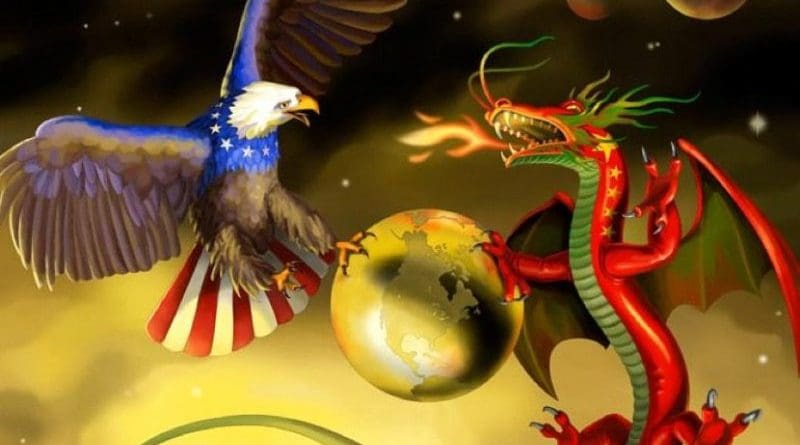Lim Teck Ghee

It is clear from various military statistics that the United States has an overwhelming superiority over China in most if not all spheres of any likely war. Be it in nuclear weaponry, warships, submarines, military aircraft or military satellites, the US alone – without allies in the West, and Taiwan and possibly Japan – has the resources to outshoot China.
At the same time, the military capacity of the US is increasing every year. Latest reports show that the United States spends more on national defence than China, Russia, India, Saudi Arabia, United Kingdom, Germany, France, South Korea, Japan, and Ukraine combined. US defence expenditure of US$870 billion in 2022 dwarfed that of China’s estimated US$230 billion.
The US is also the world’s leading armament producer and salesman. The US accounted for 40% of the total volume of international arms transfers between 2018–2022. Japan and Australia, members of the QUAD set up to counter China in the Indo Pacific region, are the US biggest weapons customers while Taiwan under President Tsai Ing-Wen has purchased several US$ billion worth of weaponry during Biden’s administration.
Meanwhile, current wars in Gaza and Ukraine are keeping US armament factories busy and ensuring big pay cheques for the political and military lobbies supporting them. They are also keeping investors in US ‘defence’ companies happy.
Any war, even a heightened threat in the Asian and Pacific region, will undoubtedly produce enormous returns to the US and western military industrial complex even if the larger share market drops.
China, despite its enormous industrial and manufacturing capability, ranks fourth in the world in armament exports after US, Russia and France, with an estimated 5.2%, or one-eighth of the US volume. China’s armament exports fell by 23% from 2013-17 to 2018-2022 whilst that of the US increased by 14%.
These figures speak for themselves as to which country – the US or China – is a more militarised one; and which country is benefiting from wars and the consequent suffering and misery in the world.
US Encirclement of China
Not satisfied with military superiority, US politicians and military leaders are engaging in new attempts to inflate China’s military capability and expenditure so as to justify further increases in US spending.
In spite of these efforts aimed at scare mongering through hyping the China challenge to US military supremacy, everyone knows that the US has its military boot print and agenda all round the world but especially in the Asian region.
Within the Indo-Pacific region, the US has for more than 70 years implemented a “first island chain” security network aimed at projecting US military power. Initially directed against the Soviet Union after the end of the 2nd world war and following the outbreak of war in Korea in 1951, it is now aimed primarily against China whose coastline the US considers as potential enemy territory.
The midpoint and key part of this first island chain is to be found in Taiwan popularly referred to by American policy makers as their “unsinkable aircraft carrier”.
In addition, a second American security island chain has been developed with Japan, the Philippines, Australia and the islands of Micronesia as components. As with the first chain, the target is China.
Within these two island chains are stationed hundreds of thousands of US military personnel. A recent US congressional report revealed that 375,000 US military personnel are presently based in 66 distinct ‘defence’, that is, military installations in the Indo Pacific region.
In contrast, China has one foreign military base – not in Asia but in Djibouti, Africa.
All evidence shows conclusively that China’s military capacity and capability is far inferior to the US for now and in the foreseeable future.
At the same time, Chinese leaders have repeatedly declared that China has no intention to challenge or unseat the American position in the region.
This does not mean that China will be a sitting duck or easy target should the US decide to take on China and what Chinese leaders regard as the country’s national interest and legitimate position in the Asian region.
Hence China today is in the midst of two major campaigns to turn its People’s Liberation Army (PLA) into a “world-class military” by 2027 and to achieve “national rejuvenation” by 2049.
Will China’s growing technological prowess and nuclear arsenal be sufficient to deter US from the war which members of the American leadership are eagerly provoking, and which they are in a hurry to initiate for fear that US military superiority will be lost soon?
Meanwhile, the US has opened up new fronts to take down China.
Speaking at an annual national defence forum in Simi Valley in California, US Commerce Secretary Gina Raimondo asked lawmakers, Silicon Valley and US allies to stop China from getting semiconductors and cutting-edge technologies key to national security
She said China is “the biggest threat we’ve ever had” and stressed that “China is not our friend”.
“Everyday China wakes up trying to figure out how to do an end run around our export controls… which means every minute of every day, we have to wake up tightening those controls and being more serious about enforcement with our allies.”
What she did not say is that she wakes up every day from nightmares on the rise and development of China, and perhaps with a Huawei handphone by her bedside ringing to wake her up to do battle.
Raimondo and her war obsessed colleagues should realise that any war between the US and China on any front – whether military, commercial, trade or economy – will not see only China as the loser.
The US, even if it wins, will definitely pay a heavy price.
No comments:
Post a Comment